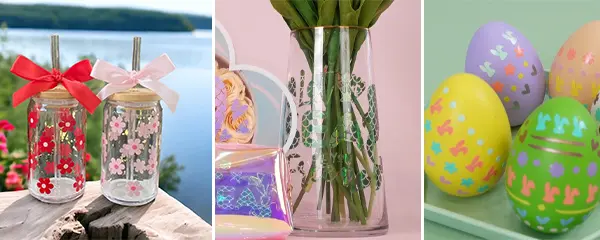
Choosing the Right Waterproof Sticker Paper for Inkjet Printer
2024-11-22
How to keep permanent adhesive vinyl from peeling?
2024-11-29Permanent vinyl is known for its strong adhesive and versatility, but does it really stick to everything? Let’s dive in to uncover where permanent vinyl shines, where it struggles, and how you can get the most out of it.
What Is Permanent Vinyl?
Characteristics of Permanent Vinyl
Permanent vinyl is a type of adhesive material that manufacturers design for durability and water-resistant properties. It clings to surfaces for the long haul, resisting wear and tear from daily use or environmental exposure.
How It Differs From Removable Vinyl
While permanent adhesive vinyl is made to last, removable vinyl is crafted for temporary projects. The adhesive on removable vinyl is weaker, allowing it to peel off cleanly without leaving residue. On the other hand, permanent vinyl is tough, making it ideal for projects requiring longevity.
Where Does Permanent Vinyl Work Best?
Smooth Surfaces
Permanent vinyl sticks best to smooth, non-porous surfaces. These provide a flawless adhesive bond, ensuring the vinyl stays put.
Glass and Mirrors
Ever seen beautifully customized glass jars or mirrors? Permanent vinyl adheres like a champ to these surfaces, making them ideal for elegant DIYs or labeling.
Plastics and Acrylics
From water bottles to storage bins, plastics and acrylics are excellent candidates for permanent vinyl. Just ensure the surface is clean and free of oils before applying.
Metals
Metal surfaces, like stainless steel or aluminum, hold onto permanent vinyl well. This is why it’s often used for signs or vehicle decals.
Wood
Sealed or painted wood is a great option.
Raw, porous wood should be prepped with a sealant.
Ceramic
Ideal for tiles, plates, and mugs.
For mugs, consider handwashing only to extend the design’s lifespan.

permanent vinyl applications
Challenges with Certain Surfaces
Textured or Uneven Surfaces
Rough or bumpy surfaces, like textured walls, can prevent proper adhesion. The vinyl may peel or fail to stick entirely.
Fabric and Textiles
Unless paired with special heat-transfer methods, permanent vinyl doesn’t adhere well to fabric. It’s better to use heat transfer vinyl (HTV) for clothing or textiles.
Walls and Painted Surfaces
Painted walls, especially those with flat or matte finishes, can be tricky. The adhesive might not form a strong bond or could damage the paint upon removal.
Dirty or Oily Surfaces
Dirt and oil compromise the bond, so clean surfaces are a must.
How Permanent Is Permanent Vinyl?
Resistance to Environmental Factors
Permanent vinyl is weather-resistant, making it a go-to choice for outdoor projects like mailboxes, car decals, or garden signs.
Longevity of Adhesion
When applied correctly, permanent vinyl can last for years without peeling or fading, even in tough conditions.
Tips for Successful Vinyl Application
Clean Thoroughly: Use rubbing alcohol to remove dirt and grease.
Use Transfer Tape: This helps place the vinyl precisely.
Apply Pressure: Use a squeegee or credit card to eliminate air bubbles.
Cure Time: Allow the vinyl to set for at least 24-48 hours for maximum adhesion.

squeegee
Permanent vinyl sticks to many materials, especially smooth, non-porous surfaces, but it doesn’t stick to everything. With proper preparation and surface selection, you can create stunning, long-lasting projects. Whether it’s decorating your home or labeling your gadgets, the possibilities are endless!
Related:
Why won’t my permanent vinyl stick?
Do you have to use transfer tape with permanent vinyl?
Adhesive Vinyl vs. Heat Transfer Vinyl: Which One to Choose?

